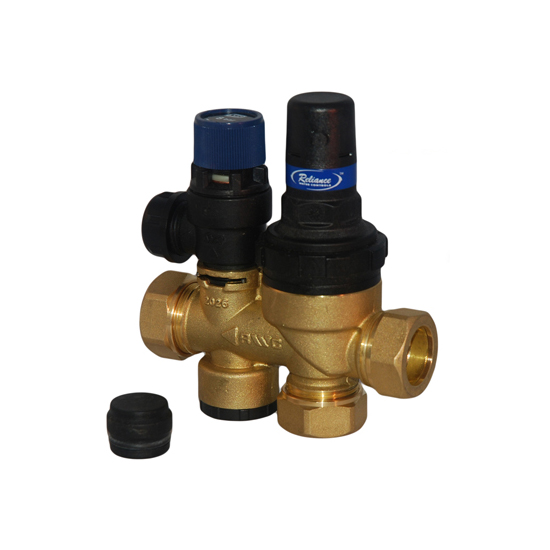- Home
- How to
- How to
- Services
- Services
- Maintenance Plan
- Location
- Guides
- Guides
- No Hot Water – Self help
- Unvented Water Heater
- Unvented Water Heater Faults
- G3 Building Regulations
- Thermal Store Water Heaters
- Thermal Store Faults
- Gledhill ElectraMate
- Gledhill PulsaCoil
- Gledhill Torrent
- Gledhill Stainless Lite
- OSO Unvented Heater
- MegaFlo – Heatrae Sadia
- Santon Premier Plus
- Albion
- Manco Riverstream and Powerstream
- Manco Gladiator & Stirling
- Telford Tempest
- Safety Considerations Unvented Cylinders
- Reduce Your Water Heating Bill
- Range Tribune
- About Us
- About us
- Forum
- Contact

-
Call Now
Specialists in Electric Hot Water Cylinders
Why a Combination Valve Failure Might Cost You More Than Just Hot Water
When you turn on the tap, you expect hot water to flow. That ability depends on several components in your unvented cylinder, and one of the most important is the combination valve. This small but important part regulates incoming water pressure, prevents backflow into the mains, and protects your system from dangerous overpressure.
If it fails, you might first notice it because there’s no hot water. However, the hidden consequences can run much deeper (and can be much more expensive) than having to take a cold shower.
How a Combination Valve Works (and Why It Matters)
A combination valve typically combines a pressure-reducing valve, check valve, and expansion relief valve in one unit. In short, it makes sure your cylinder only receives water at the right pressure, while stopping it from feeding back into the public supply.
If the valve stops working, water pressure can fluctuate wildly. Too high, and you risk damaging your cylinder or activating the safety discharge. Too low, and your hot water flow becomes a dribble. Either way, you’ll notice, and so will your wallet.
The Direct Cost: No Hot Water
The most obvious sign of trouble is a lack of hot water. When the combination valve isn’t regulating correctly, your cylinder might not refill very fast or heat properly. That means a cold shower and an urgent call to your engineer.
However, that repair bill is only the start.
The Hidden Costs You Might Not See Straight Away
1. Property Damage
If the pressure relief valve fails, you could be looking at leaks from the tundish or even water leaking into the surrounding area. Over time, that moisture causes rot, mould, and structural damage, all of which can run into hundreds or even thousands of pounds to put right.
2. Energy Waste
A failing valve can cause your system to work harder than it should. For example, excessive incoming pressure can trigger more frequent discharges through the relief valve. The cylinder then has to refill and heat the water again (after you’ve already heated and basically dumped out water). You pay for that energy twice, once to heat the water and again to replace it.
3. Emergency Call-Outs
When hot water stops, you’re far more likely to call for help right away, and emergency or out-of-hours visits aren’t cheap. A planned annual service is far less expensive than a repair in the middle of the night.
4. Reduced Lifespan of Your Cylinder
Constant strain from poor pressure regulation can shorten your cylinder’s working life. Replacing an unvented system years ahead of schedule is one of the most expensive avoidable outcomes.
How to Avoid the Costs
Prevention is cheaper than a cure. Annual servicing by a G3-qualified engineer makes sure your combination valve is checked, cleaned, and replaced if necessary before it fails completely. Keep an eye on your tundish, too. If you see a steady drip when no taps are running, it could be an early warning that your valve or another safety device needs attention.
Also, if your property has particularly hard water, limescale can clog the valve’s internals. A scale reducer fitted upstream can help protect it and keep your unvented cylinder working efficiently.
A Small Part with a Big Job
A combination valve might be a small part, but its job is pretty significant. If it fails, the financial fallout can extend far beyond the cost of replacing the valve itself. From wasted energy to property damage and premature system failure, the risks are real (and preventable).
By making sure yours is in top condition, you’re not just protecting your hot water. You’re protecting your home, your budget, and your peace of mind.
Iain, Nantwich
13 October 2025
Annual Service
Excellent service as always.. Highly recommendable.
Peter , Nantwich
16 September 2025
Annual Service
Very pleased with all aspects of the work completed by your knowledgeable staff.
Barry, Royton
13 June 2025
Replacement Valves
Tom, Manchester
20 May 2025
Replacement Valves
Raymond, Lancashire
1 May 2025
Annual Service
Vickie, Didsbury
10 April 2025
Annual Service
Raymond, Reddish
17 March 2025
No Hot Water
Brenda , Liverpool
12 February 2025
Installation
Gianfranco, Uk
18 February 2025
Annual Service
As always the serrvice was done efficiently and the surrounding area left clean and tidy.
Anne, Manchester
30 January 2025
Annual Service

© 2025 EasyFlow Water Limited. All rights reserved








Find out what our clients are saying about the services we provide
Click to view